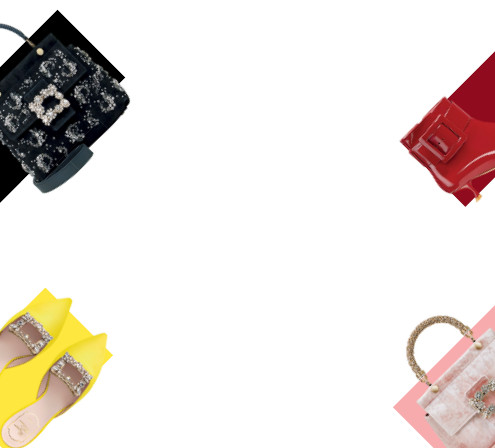As the Belle Vivier shoe celebrates its 55th anniversary, Jeffrey Yan chats with Gherardo Felloni, Creative Director of Roger Vivier, about taking the heritage brand into a new age.


From the moment Catherine Deneuve sauntered onto the screen as Séverine Serizy in Luis Bunuel’s 1967 movie Belle de Jour, she wrote the blueprint for coquettish French chic. A huge part of the allure came from the impeccable wardrobe— clothes by Yves Saint Laurent and shoes by Roger Vivier. In a tribute to the favourite cult film, the footwear maestro named those shoes the Belle Vivier. Its blockish shape and graphic buckle symbolised the spirit of the ’60s, and the latter has remained a House icon ever since.
Throughout his entire career, screen legends and the world’s biggest names alike turned to Vivier when they needed an extra helping of glamour. The shoemaker shod women the likes of Jacqueline Kennedy, Queen Elizabeth, Marlene Dietrich and Elizabeth Taylor. The inventor of the stiletto and the comma heel also collaborated with fashion’s most brilliant minds: He helped define mid-century fashion alongside Christian Dior and worked with Yves Saint Laurent on some of his most legendary collections, including his Mondrian masterpiece. It is the geometric Belle Vivier buckle, though, that has become one of Vivier’s most enduring legacies—a calling card and visual shorthand for the brand, as well as an unfading symbol of taste, refi nement and a certain kind of understated Parisian chic.
Since his appointment in 2018 as the House’s creative director, Gherardo Felloni has brought an exciting new energy to both the buckle and the brand. Juggling his respect for the House codes with his own maximalist sensibilities, Felloni has injected a new-again opulence into the Roger Vivier design vocabulary with precious jewel-like details and exuberant colours. He is also a resolute 21st-century designer and his work is thus rooted in modernity. It was Felloni who introduced sneakers to the brand—and the Viv’ Run series has since gone on to become a bestseller. Here, Felloni tells all about balancing heritage and modernity, and what drives him as adesigner.



Clockwise from far left: Embellished suede bag; patent leather lace-up boot; patent leather ankle boot; velvet top-handle bag; satin mules, Roger Vivier


Clockwise from left: Velvet top-handle bag; patent leather ankle boot; embellished suede bag; velvet top-handle bags; satin mules; patent leather lace-up boot, Roger Vivier
























